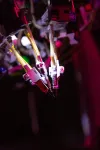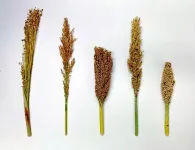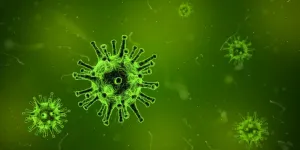It is difficult to find a strictly academic definition for today's 'self-isolation'. According to the Rospotrebnadzor website, 'Self-isolation is the act of remaining strictly at one's place of residence. During self-isolation, any contact with individuals who are not members of the inner household unit is limited'. This description is very similar to social isolation, which is described by dictionaries as a phenomenon in which an individual or a social group is detached from other individuals or groups 'as a result of interrupted or sharply limited social contacts and relations'. They are similar, but not the same.
People cut off from others because of COVID-19 are not polar explorers, cosmonauts, or sailors who have left the mainland, nor are they prisoners, nor are they volunteers who avoid contacts due to their personal preferences. Psychologists and sociologists have studied all the above listed categories of people to a certain extent. For example, a laboratory study of 'cohabitation of small groups in close quarters' was conducted in the Soviet Union in the latter half of the 20th century. It revealed that prolonged isolation strains relationships and increases conflicts. The study also showed that it increases the need for alone time and informal interaction.
Today's situation is different. It is usually described by its four main features: its quasi-compulsory nature; the act of isolating oneself in one's own house (apartment), usually, with one's family; and the unlimited use of the internet. The HSE researchers hypothesized that the impact of these features would be mainly negative. They checked their hypothesis by analysing survey data, which was obtained in April 2020 during the massive lockdown in Russia.
The survey included 69 questions, and it was distributed via social media, as well as messaging apps such as Telegram, Facebook, Viber, and WhatsApp. The researchers surveyed female residents of the regions in Russia with the highest shares of the country's registered coronavirus cases at the time: Moscow, St. Petersburg, Nizhny Novgorod, Moscow Oblast, Leningrad Oblast, and Nizhny Novgorod Oblast.
A total of 384 questionnaires were processed. The study focused specifically on employed educated women with average and above-average incomes. Women of this group constitute a special demographic that, in contrast to average Russian women, is less dependent on the patriarchal family structure, more often work in fields in which working remotely is possible, have higher incomes, and more time for themselves.
Describing general trends in how the respondents answered questions about where and with whom they self-isolated, the researchers noted a share of women who reported moving to smaller towns with their kids -- probably, to stay with or near their parents -- while leaving their husbands at home in larger cities. A majority of the respondents reported that they live in cities permanently, but during the lockdown, this share fell by 10%. The share of those living with a spouse (partner) fell by 4%, while the share of those living with parents grew by 5%.
The reasons for their relocation were: fear of getting infected with COVID-19 in the larger cities where they resided; the desire to help older family members; concern for the health of their children, for whom 'it is better to be in nature'; and the need to save money, which is much easier to do in rural areas where the cost of living is lower.
Over half of the respondents (52%) began working from home. However, they are not sure whether they like it or not: almost one fifth of respondents have not decided how they feel about working from home, both in terms of the current moment and as a possibility in the future.
Blurred work-time boundaries and a lack of face-to-face interaction with colleagues were cited as the main drawbacks of remote work. The main advantages included the opportunities to not waste time on getting ready and commuting, reduce expenses, and finally get enough sleep.
Over 50% admitted that now they have more spare time, but many of them chose not to put it to positive use: instead, self-isolation has led them to a passive lifestyle, laziness, and apathy.
'We did not see women starting to spend considerably more time on teaching their children or cooking, studying or self-development, housework, gardening, or home renovation,' said the researchers. 'Instead, as preliminary research results show, they started to exercise less and spend less time taking care of themselves. Moreover, they started spending more time on social media, watching TV, and napping.'However, more in-depth research is needed to examine the changes.
These responses, however, cannot be generalized to Russia's entire female population. The survey participants are not average Russian women, who have fewer opportunities for laziness and idleness due to lower incomes, harder work, and having more children.
The inability to organize one's time has made bad habits worse. Lying in front of the TV and excessive internet use was joined by alcohol consumption (14% started drinking more alcoholic beverages), smoking (7%), and overeating (28%).
For 17% of families, the challenges that come with self-isolation have led to conflicts. Arguments, strong language, anxiety, emotional discomfort, and annoyance by having to spend much more time than usual together in a single place has destroyed relationships and provoked domestic violence.
The negative impact of self-isolation on the emotional climate in families was only partially confirmed. 'Due to the specifics of prevailing views in Russian culture and inculcated family values, the negative trends did not demonstrate as rapid and drastic an increase as in some other countries, where divorce rates increased after the lockdown,' the researchers conclude.
The hardships people experience in lockdown have led to a heightened demand for psychological counseling. Therapists are getting more clients, while women themselves are choosing psychology as a hobby more often. The traditional hobbies of cooking, beauty, and fashion remain interesting, but pedagogy, politics, and online learning have emerged as new areas of interest among the women surveyed in the study.
The preservation of another tradition - going to beauty salons - did not depend on women in self-isolation. Salons were closed, and only a small number of those surveyed reported ignoring the bans: 92% of respondents said they did not arrange 'underground' visit salons or order beauty services at home. Instead they began doing beauty procedures on their own at home, and the money saved from this positively impacted household budgets.
Speaking of budgets, 40% of respondents suffered budget cuts during the lockdown. However, far from all respondents reported trying to remedy the situation, and those who did attempted to do so by varying means.
Generally, two key strategies emerged: wealthier families tried to increase their incomes, while poorer ones decreased the expenses.
The study results show that: 40% found additional ways to earn money; About 40% stopped paying off mortgages or credit card bills as well as utilities; About 20% asked their banks to refinance their loans; 1% chose to receive social benefits; 1% chose to receive unemployment benefits.
One out of every four women reported that they are worried about the future of their family budget. By the number of responses, it has been the key negative consequence of the compulsory isolation. Among the positive consequences of it, the leader (cited by one third of respondents) was the opportunity to spend more time with family.
Many respondents (37%) see no advantages to self-isolation, but its effects have already become a fact of life. Life has changed, and for the majority of survey respondents (53%), it has changed considerably or dramatically.
INFORMATION:





